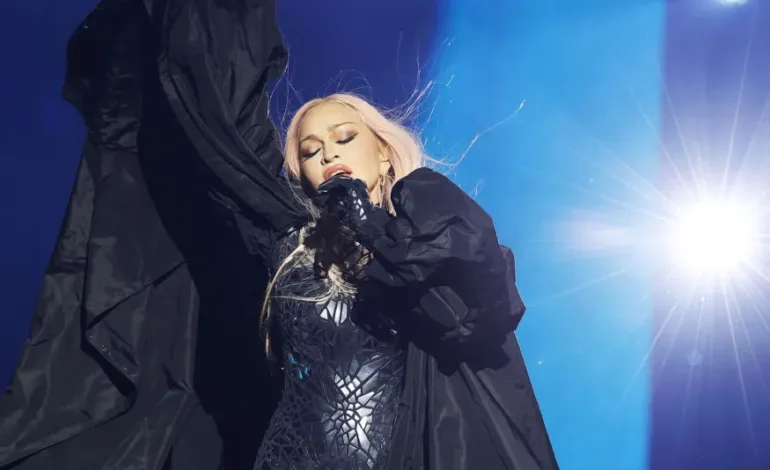
Madonna to Gen Z: The Transformation of Pop Culture and Self-Expression
In today’s world, we are witnessing a renaissance of artistic freedom that is unparalleled in human history. The explosion of creativity and the sheer diversity of expression are both exhilarating and overwhelming. This era, defined by the breakdown of cultural and social restraints, allows individuals to express themselves in previously unimaginable ways.
Take, for instance, the modern celebrity landscape. Figures like Doja Cat, Lady Gaga, and Lana Del Rey epitomize this newfound freedom. Doja Cat, who began her career with a quirky cyber persona, has now transformed into a figure that oscillates between demonic and ethereal. Lady Gaga, with her avant-garde fashion and maximalist performances, has always pushed the boundaries of what it means to be a pop star. Her influence is so profound that she has been described as “a complete realization of postmodernism in human form”—a testament to her ability to subvert and redefine cultural norms.
Lana Del Rey, on the other hand, represents a different kind of rebellion. She rejects the fast-paced, hyper-modern world around her by embracing a vintage, almost nostalgic aesthetic. This is a clear example of how the internet has democratized not just society but also individual realities. Fans can now immerse themselves in the media of any era, making time itself feel less relevant. Lana’s ability to thrive during the peak of loud, maximalist pop underscores the limitless possibilities of self-expression in our current age.
The roots of this artistic freedom can be traced back to the Enlightenment, which shifted authority from religious institutions to the individual. This philosophical shift laid the groundwork for the postmodern era, characterized by scepticism, subjectivism, and relativism. Postmodernism rejects grand narratives and objective truths, allowing for a plurality of perspectives and expressions. This cultural shift has led to the “anything goes” mentality that defines our current artistic landscape.
Lady Gaga’s career is a prime example of this shift. Her debut album, The Fame, and its reissue, The Fame Monster, catapulted her to stardom with hits like “Just Dance” and “Poker Face.” Gaga’s ability to reinvent herself continuously has kept her at the forefront of pop culture. She has been influenced by artists like David Bowie, Cher, and Madonna, but her unique blend of futurism and camp has made her a singular figure in the music industry.
Ethel Cain, another fascinating artist, uses her music to explore alternative timelines and channel traumatic experiences. Her debut album, Preacher’s Daughter, is a cautionary tale that delves into the darker aspects of life. As a transgender woman, Ethel’s focus on Southern Christian culture is a bold subversion of norms, particularly within the LGBTQ+ community. Her work exemplifies the power of storytelling and character creation in modern art.
Doja Cat, with her ever-evolving persona, embodies the essence of postmodern celebrity. Her transformation from a quirky cyber character to an edgy, horror-inspired figure is a reaction to the pressures and expectations of her fans. Her ability to subvert herself and embrace irony and absurdity makes her a true representation of Generation Z’s online culture. Doja’s approach to self-expression is a testament to the limitless possibilities of our current era.
Cindy Sherman, a photographic artist known for her eccentric self-portraits, also exemplifies this era of artistic freedom. By using prosthetics and makeup, Sherman transforms herself into a myriad of characters, challenging the constraints of individuality. Her work mirrors the broader trend in pop culture, where artists like Lady Gaga and Melanie Martinez use their bodies as canvases for their art.
In the dazzling world of pop music, certain names shine brighter than others, not just for their chart-topping hits but for their ability to redefine what it means to be a female pop icon. The likes of Beyoncé, Kesha, Britney Spears, Christina Aguilera, and Pink have all navigated the tumultuous waters of fame with varying degrees of success and reinvention, each leaving an indelible mark on the industry.
Beyoncé, often hailed as the queen of pop, has crafted a career that is nothing short of legendary. From her early days with Destiny’s Child to her groundbreaking solo work, she has consistently pushed the boundaries of music, performance, and visual artistry. Her 2016 album Lemonade was a cultural reset, blending personal narrative with political commentary, and was lauded as a “masterpiece of pop storytelling.” Beyoncé’s ability to evolve while maintaining a core sense of identity is what sets her apart. As music critic Jon Pareles noted, “Beyoncé is a woman who has it all: voice, looks, and a sense of mission.”
Kesha, on the other hand, burst onto the scene with a rebellious spirit and anthems like “Tik Tok” that defined a generation. Despite her early success, Kesha’s career faced significant challenges, including a highly publicized legal battle with producer Dr. Luke. This struggle for artistic freedom and personal liberation culminated in her 2017 album Rainbow, which was praised for its raw emotion and resilience. Kesha’s journey from pop party girl to a symbol of strength and empowerment is a testament to her enduring spirit. As she once said, “I have to fight for my rights as an artist and a human being.”

Britney Spears, the quintessential pop princess, has experienced the highest highs and the lowest lows of fame. Her meteoric rise in the late ’90s with hits like “…Baby One More Time” made her a global sensation. However, the intense scrutiny and pressure of the spotlight led to a very public breakdown in 2007. Spears’ subsequent fight for autonomy, culminating in the termination of her conservatorship in 2021, has been both heartbreaking and inspiring. Her resilience and continued influence on pop culture underscore her status as an icon. As Britney herself poignantly stated, “I am stronger than yesterday.”
Christina Aguilera, often seen as Britney’s rival, has carved out her own niche with a powerful voice and a penchant for reinvention. From the bubblegum pop of “Genie in a Bottle” to the raw, soulful sound of Stripped, Aguilera has never shied away from exploring new musical territories. Her ability to adapt and evolve, while staying true to her vocal prowess, has earned her critical acclaim and a devoted fanbase. Aguilera’s journey is a testament to the power of self-expression and artistic growth.
Pink, known for her edgy persona and acrobatic performances, has consistently challenged the norms of pop music. Her debut album Can’t Take Me Home introduced her as a rebellious force, and she has since built a career on authenticity and resilience. Songs like “Just Like a Pill” and “What About Us” showcase her ability to blend personal pain with universal themes, making her music both relatable and empowering. Pink’s defiance of industry expectations and her commitment to staying true to herself have solidified her as a pop icon.
What makes a female pop icon? It’s a blend of talent, reinvention, and the ability to connect with audiences on a deeply personal level. Kylie Minogue, Madonna, Whitney Houston, and Mary J. Blige each exemplify these qualities in their own unique ways. Kylie Minogue’s longevity in the industry, from her ’80s hits to her recent disco revival, showcases her ability to adapt and stay relevant. Madonna, the ultimate chameleon, has continually reinvented herself, pushing the boundaries of music, fashion, and culture. Whitney Houston’s unparalleled vocal talent and emotional depth made her a legend, while Mary J. Blige’s raw, soulful storytelling has earned her the title of the “Queen of Hip-Hop Soul.”
As we look to the future, the rising stars of today are already making their mark. Chappell Roan, Charli XCX, and Sabrina Carpenter are the new faces of pop, each bringing their unique flair to the industry. Chappell Roan’s haunting vocals and introspective lyrics have garnered critical acclaim, while Charli XCX’s experimental pop sound and innovative approach to music have made her a trailblazer. Sabrina Carpenter, with her versatile talent and engaging performances, is quickly becoming a household name.
In this era of immense artistic freedom, the modern female pop icon is not just a singer but a storyteller, a trailblazer, and a symbol of resilience. They navigate the complexities of fame with grace and grit, continually redefining what it means to be a woman in the music industry. As we continue to advance technologically and culturally, the possibilities for self-expression will only expand, ushering in a new era of artistic innovation. The legacy of these icons, both past and present, will continue to inspire and shape the next generation of artists.



